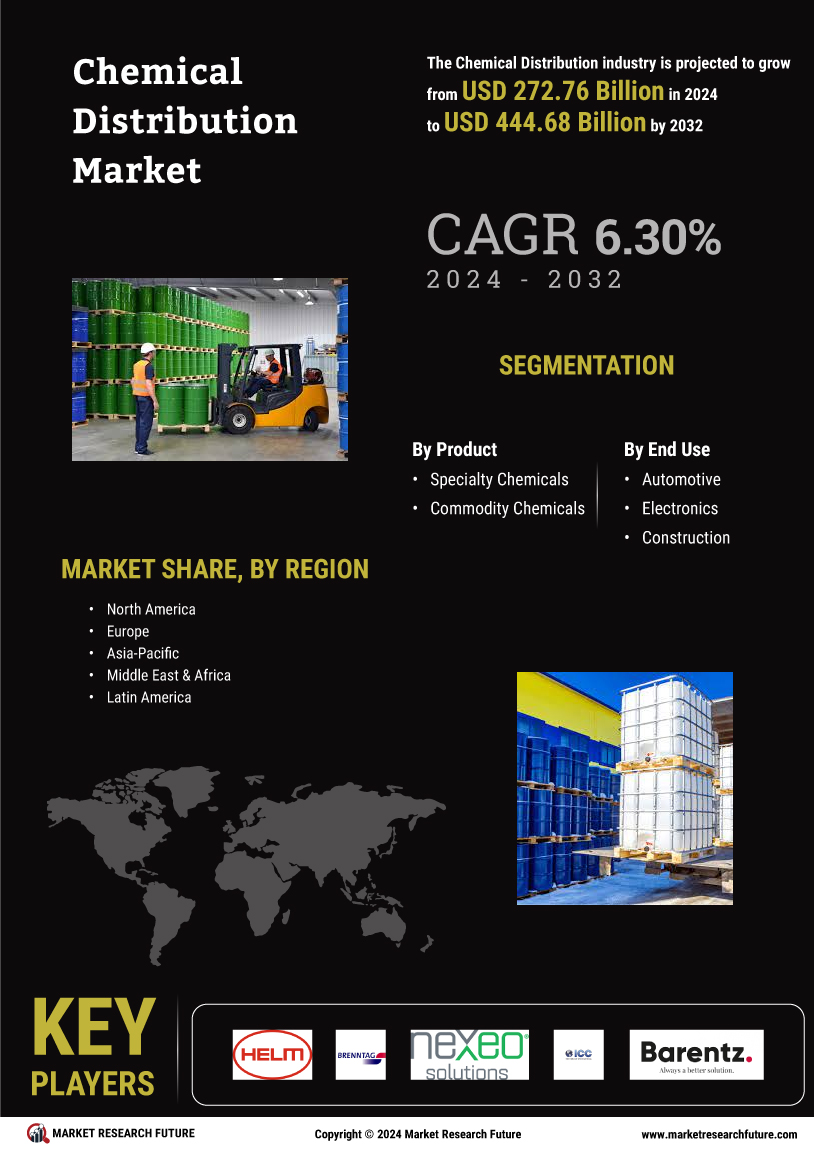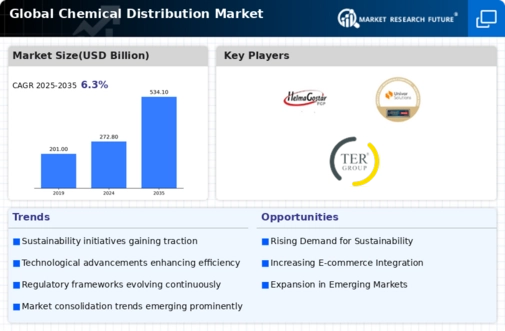Market Growth Projections
The Global Chemical Distribution Market Industry is poised for substantial growth, with projections indicating a market size of 534.1 USD Billion by 2035. This growth trajectory is underpinned by various factors, including rising demand for specialty chemicals, sustainability initiatives, and technological advancements in distribution. The anticipated CAGR of 6.3% from 2025 to 2035 reflects the industry's resilience and adaptability to changing market dynamics. As companies navigate the complexities of global supply chains and regulatory landscapes, the market is likely to evolve, presenting new opportunities for stakeholders.
Sustainability Initiatives
Sustainability initiatives are becoming a pivotal driver within the Global Chemical Distribution Market Industry. Companies are increasingly adopting eco-friendly practices, including the use of biodegradable materials and sustainable sourcing of raw materials. This shift not only aligns with global environmental goals but also caters to the growing consumer demand for sustainable products. As a result, the market is likely to witness a transformation, with a projected CAGR of 6.3% from 2025 to 2035. The emphasis on sustainability could lead to innovative distribution methods and partnerships that enhance the overall efficiency of the chemical supply chain.
Globalization of Supply Chains
The globalization of supply chains is a critical factor influencing the Global Chemical Distribution Market Industry. As companies expand their operations internationally, the demand for reliable chemical distribution networks increases. This trend facilitates access to diverse markets and enables companies to optimize their supply chains for cost efficiency. The interconnectedness of global markets is likely to drive the growth of the chemical distribution sector, contributing to the anticipated market size of 272.8 USD Billion in 2024. Furthermore, the ability to source chemicals from various regions enhances competitiveness and responsiveness to market changes.
Rising Demand for Specialty Chemicals
The Global Chemical Distribution Market Industry is experiencing a notable surge in demand for specialty chemicals, driven by their diverse applications across various sectors such as pharmaceuticals, agriculture, and electronics. As industries increasingly seek tailored solutions, the market for specialty chemicals is projected to expand significantly. This trend is reflected in the anticipated growth of the Global Chemical Distribution Market, which is expected to reach 272.8 USD Billion in 2024. The focus on innovation and customization in chemical formulations is likely to further propel this segment, indicating a robust trajectory for the industry.
Regulatory Compliance and Safety Standards
Regulatory compliance and safety standards are essential drivers in the Global Chemical Distribution Market Industry. Stringent regulations governing the handling, transportation, and storage of chemicals necessitate adherence to safety protocols. Companies that prioritize compliance not only mitigate risks but also enhance their reputation in the market. This focus on safety is likely to influence distribution practices, leading to increased investment in training and infrastructure. As the industry evolves, the emphasis on regulatory compliance could contribute to a more structured and reliable distribution network, ultimately supporting the projected growth of the market.
Technological Advancements in Distribution
Technological advancements are reshaping the landscape of the Global Chemical Distribution Market Industry. Innovations in logistics, such as automation and digitalization, are enhancing the efficiency of chemical distribution processes. The integration of advanced tracking systems and data analytics allows for better inventory management and reduced lead times. As the industry embraces these technologies, it is poised for significant growth, with projections indicating a market size of 534.1 USD Billion by 2035. This technological evolution not only streamlines operations but also improves safety and compliance within the distribution network.














